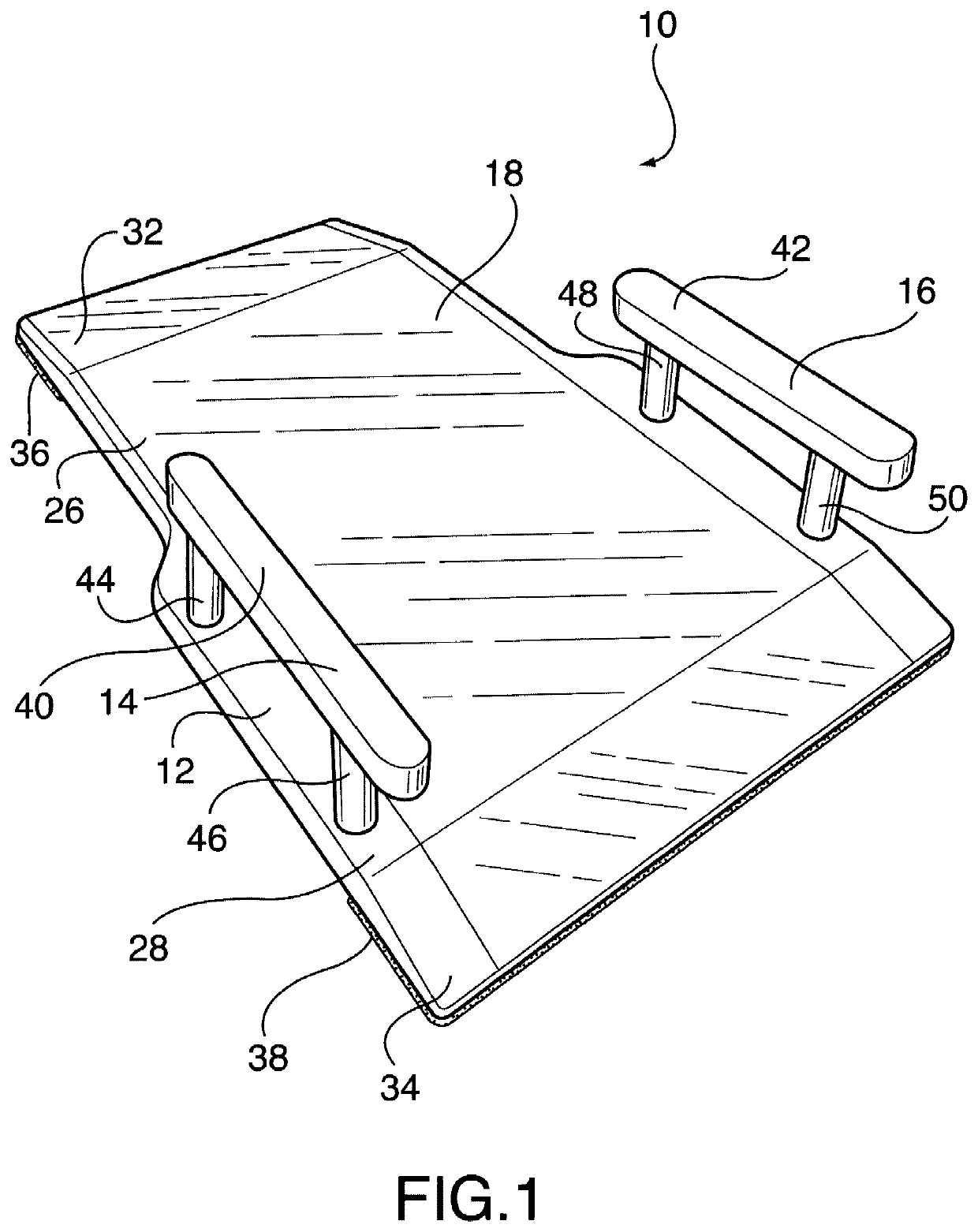Transfer board
a technology of transfer boards and transfer plates, applied in medical science, nursing beds, ambulance services, etc., can solve the problems of increasing the difficulty of operation, increasing the difficulty of moving from one location to another, and increasing the difficulty of lower extremity disabilities
- Summary
- Abstract
- Description
- Claims
- Application Information
AI Technical Summary
Benefits of technology
Problems solved by technology
Method used
Image
Examples
Embodiment Construction
[0014]Referring now to the drawings in detail wherein like reference numerals have been used in the two figures to designate like elements, there is shown in FIGS. 1 and 2 a transfer board constructed in accordance with the principles of the present invention and designated generally as 10. The transfer board 10 is comprised essentially of two main parts: a board 12 and a pair of handles 14 and 16.
[0015]The board 12 is similar in many respects to conventional transfer boards. As with conventional boards, it is preferably made of plywood or plastic or other rigid material capable of supporting the weight of an adult patient. The upper surface 18 of the board 12 is smooth and somewhat slippery which allows a person to slide across the same between a wheelchair 20 and a bed 22 or other similar support surface.
[0016]The length of the board 12 is approximately 26 to 30 inches although this may vary slightly. If the board is too long, it may be dangerous as the patient 24 would have the p...
PUM
 Login to View More
Login to View More Abstract
Description
Claims
Application Information
 Login to View More
Login to View More - R&D
- Intellectual Property
- Life Sciences
- Materials
- Tech Scout
- Unparalleled Data Quality
- Higher Quality Content
- 60% Fewer Hallucinations
Browse by: Latest US Patents, China's latest patents, Technical Efficacy Thesaurus, Application Domain, Technology Topic, Popular Technical Reports.
© 2025 PatSnap. All rights reserved.Legal|Privacy policy|Modern Slavery Act Transparency Statement|Sitemap|About US| Contact US: help@patsnap.com


